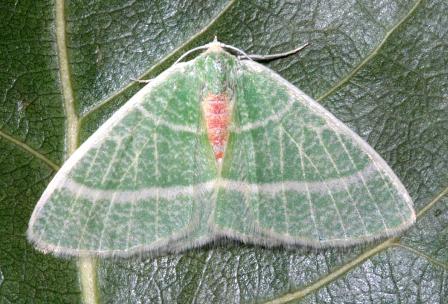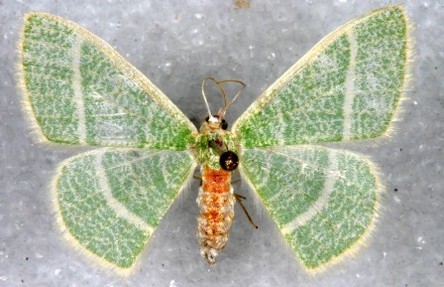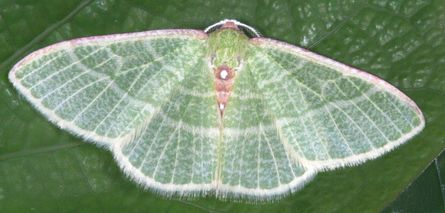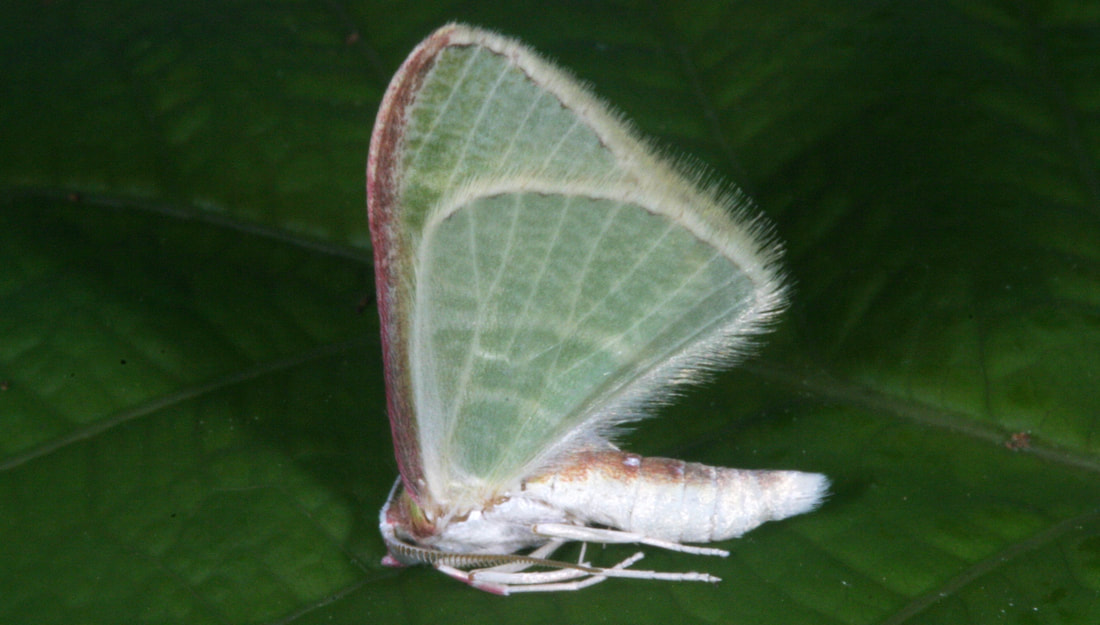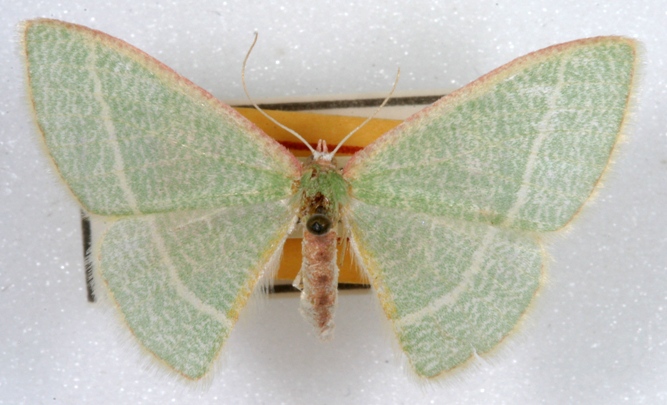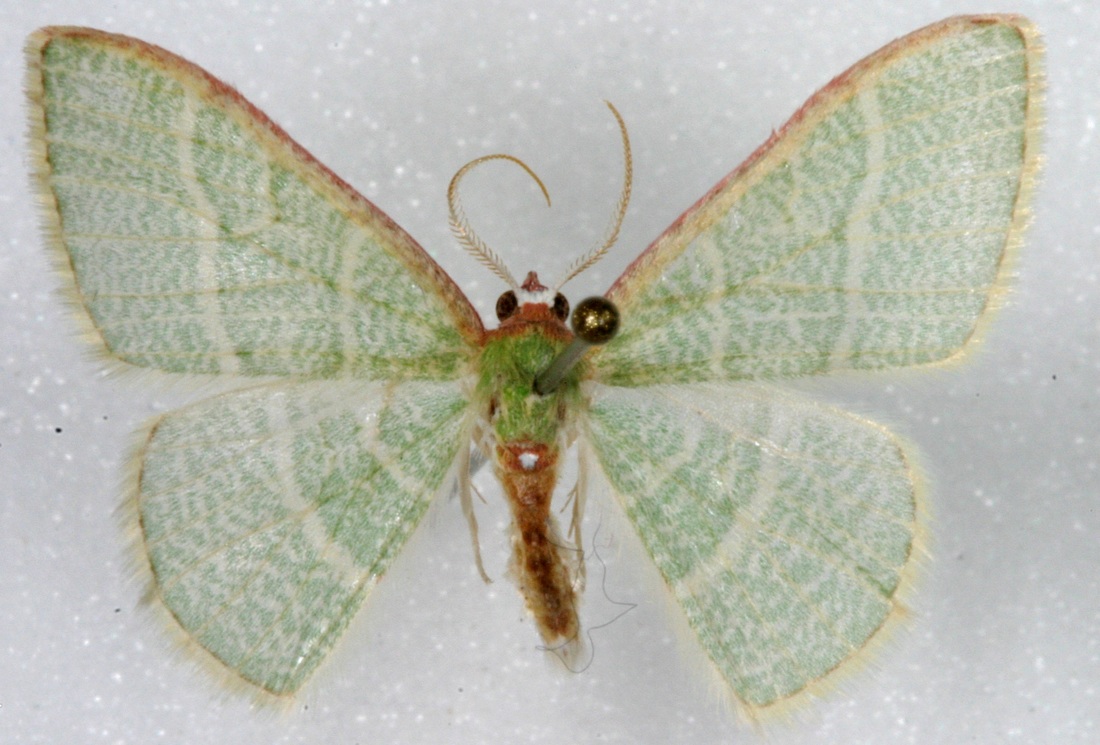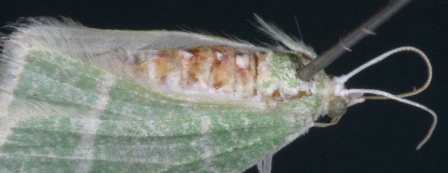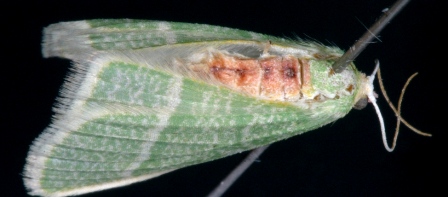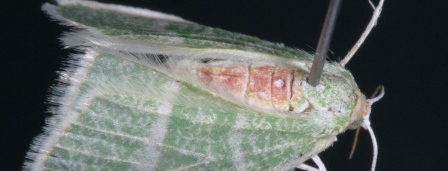Nemoria arizonaria (Grote, 1883). [7020 & 7021]
|
|
|
Nemoria arizonaria is typically found only in canyon habitats at elevations between 4,000 and 8,000 feet. The species is known from Arizona, New Mexico, and the Davis Mountains of Texas, although the summer form of Nemoria arizonaria (pictured above) has only been found in Arizona.
Nemoria arizonaria has two different seasonal forms. Initial collections described the summer seasonal form with unmarked white costa as a unique species named Nemoria aemularia (see photo above). Noel McFarland, however showed that N. aemularia adults could be reared from arizonaria eggs thereby providing the evidence that they were actually the same moth, occurring in substantially different forms. This phenomenon is called seasonal dimorphism, and represents an interesting form of polyphenism in the group.
Nemoria arizonaria is a yellow-green moth with a typically wide post-medial line. This line is not very clearly defined, however, it is one of the broadest lines among N. American Nemoria species. There also may be a very thin terminal line on the wing, which is usually yellow with some red markings between veins; the wings having a white fringe. The most notable difference between the winter-early spring form and the summer form is found in the purple red markings on the costa of the forewing. Markings on the abdomen also may differ substantially; the summer form has reddish brown markings on the first few segments for the males, and the females have no green on the abdomen and just pale red markings. (S. Bach contributing)
For images of Nemoria arizonaria larvae, click here.
Nemoria arizonaria has two different seasonal forms. Initial collections described the summer seasonal form with unmarked white costa as a unique species named Nemoria aemularia (see photo above). Noel McFarland, however showed that N. aemularia adults could be reared from arizonaria eggs thereby providing the evidence that they were actually the same moth, occurring in substantially different forms. This phenomenon is called seasonal dimorphism, and represents an interesting form of polyphenism in the group.
Nemoria arizonaria is a yellow-green moth with a typically wide post-medial line. This line is not very clearly defined, however, it is one of the broadest lines among N. American Nemoria species. There also may be a very thin terminal line on the wing, which is usually yellow with some red markings between veins; the wings having a white fringe. The most notable difference between the winter-early spring form and the summer form is found in the purple red markings on the costa of the forewing. Markings on the abdomen also may differ substantially; the summer form has reddish brown markings on the first few segments for the males, and the females have no green on the abdomen and just pale red markings. (S. Bach contributing)
For images of Nemoria arizonaria larvae, click here.
|
Note the rose colored forewing costa and yellow hindwing margin on the spring specimen above. Male specimens (and occasionally females) may have small distinct white spots on the abdomen. At right are shown the varied abdominal markings of three females of summer form Nemoria arizonaria; these show reduced white spots on a red-brown background on one or more segments, or (in the middle specimen), a reduction of the white spots to complete absence, with or without a residual dark purple brown circle. All three of the specimens at right collected in the Huachuca Mountains, Cochise Co., AZ August 2005.
|
|
